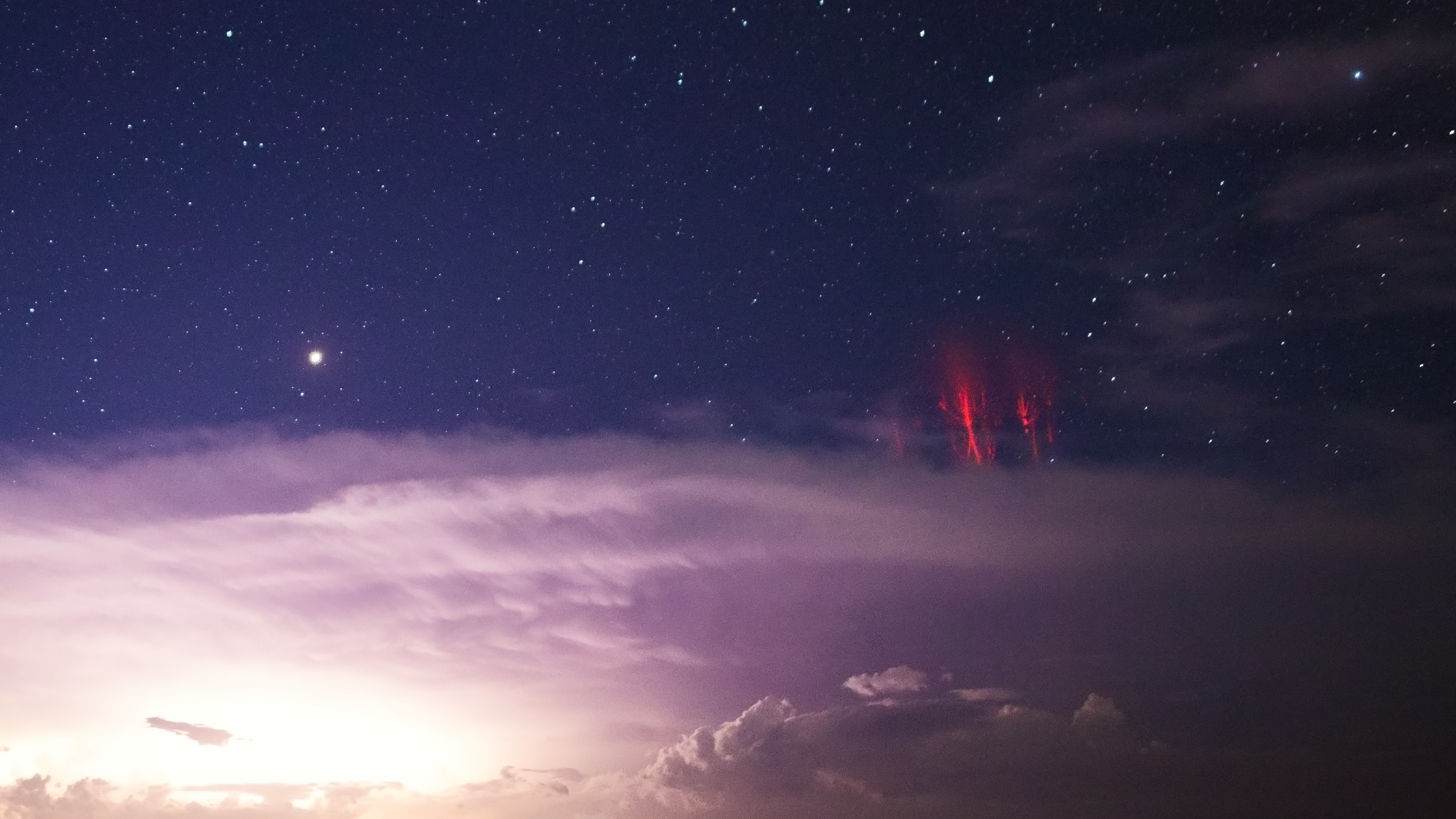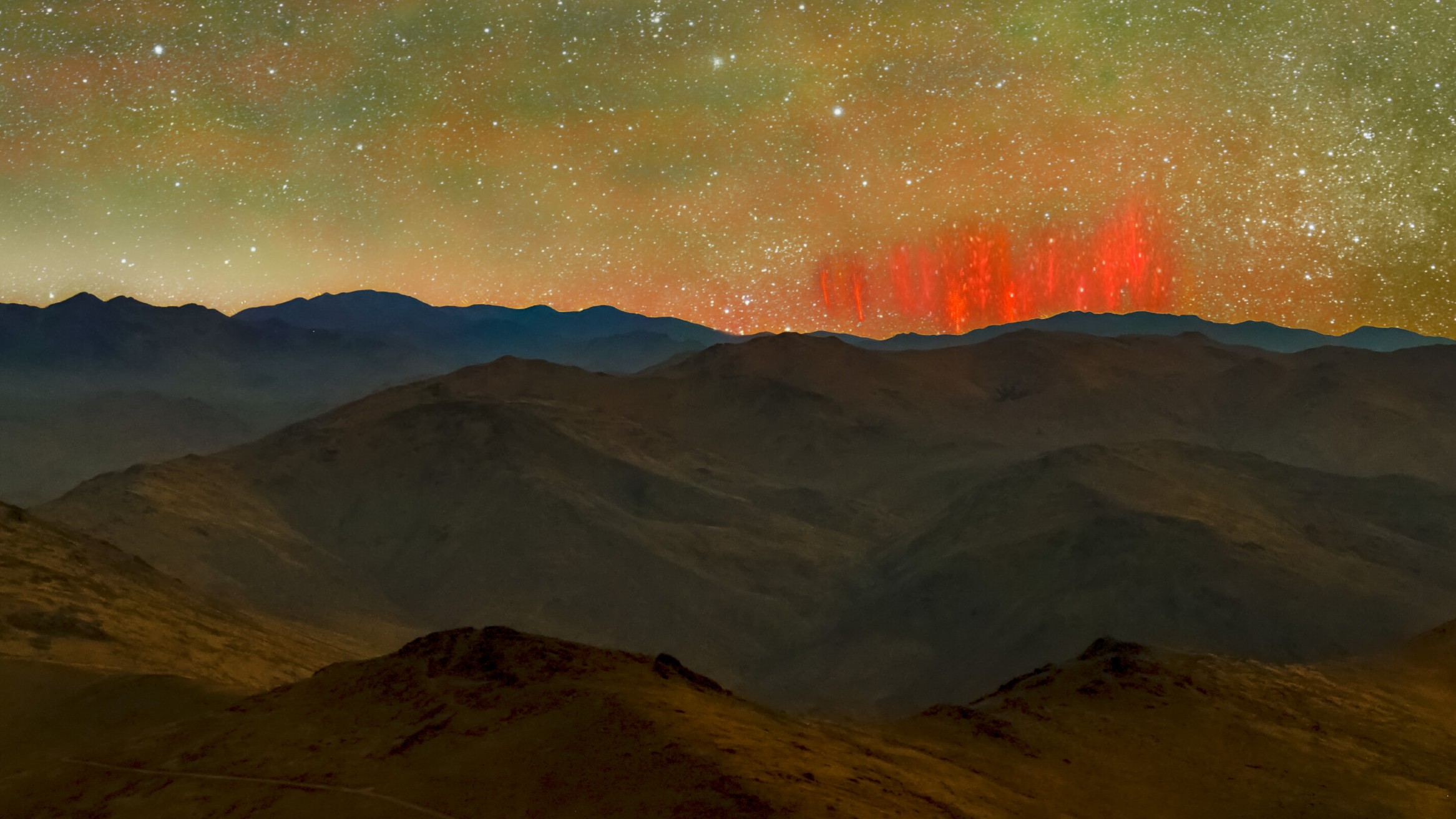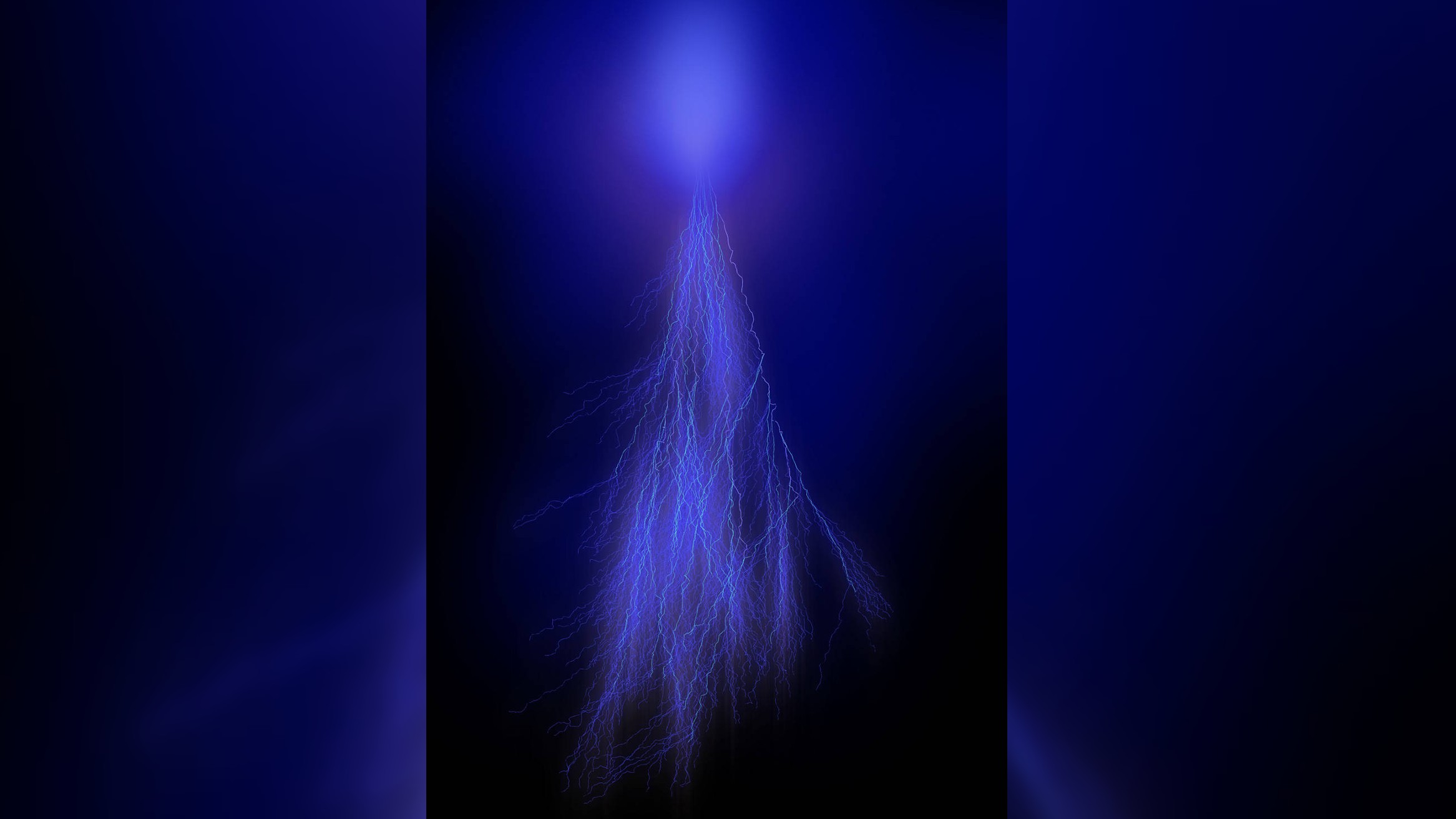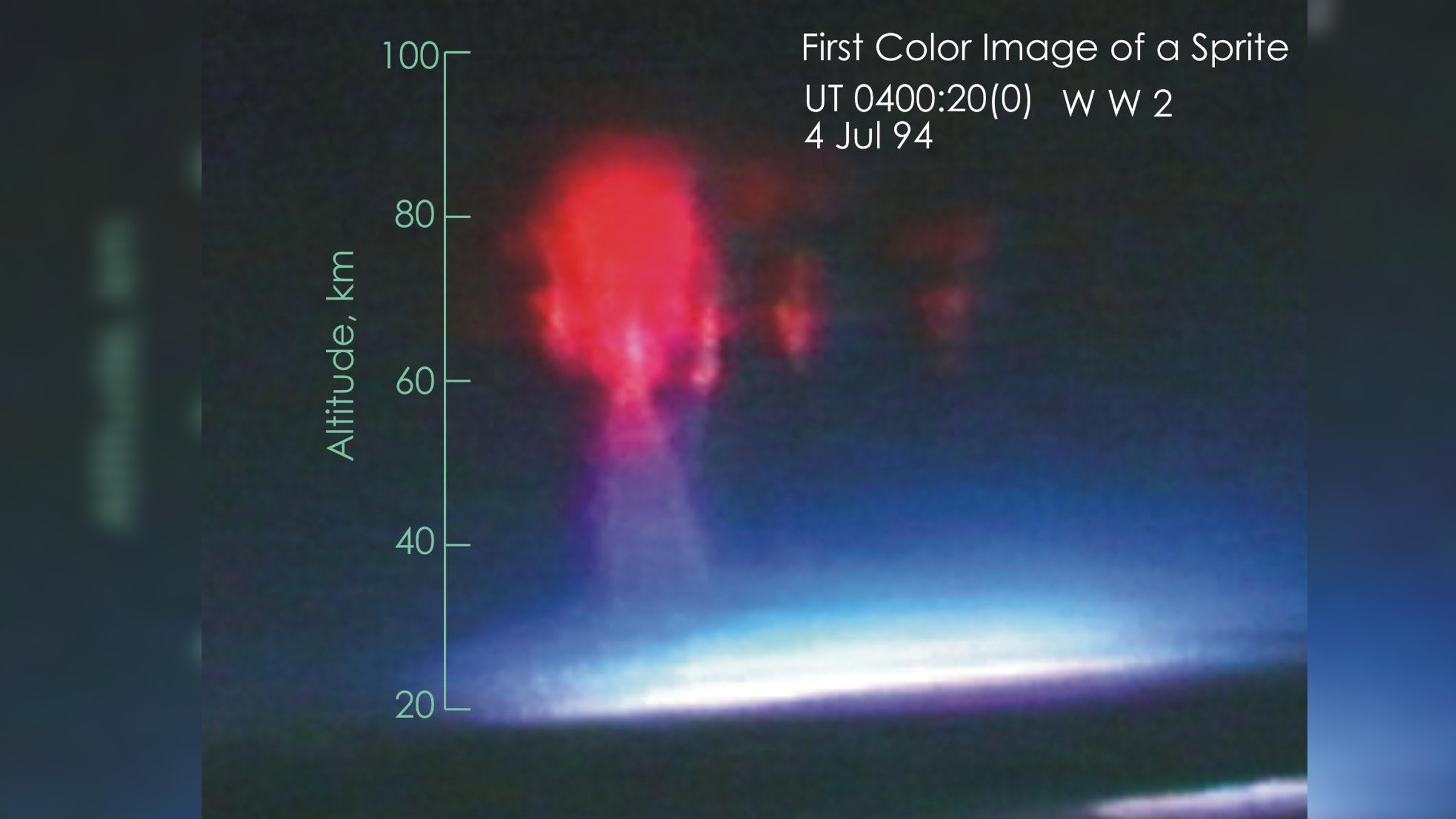Red lightning: The electrifying weather phenomenon explained
During some thunderstorms, red lightning called sprites shoot up into the top of the atmosphere.

Red lightning, also known as a "sprite", is an intriguing weather phenomenon associated with certain very intense thunderstorms. While an ordinary lightning flash extends downward from the clouds to the ground, a sprite shoots way up into the upper reaches of the atmosphere.
However, red lightning it only lasts for a millisecond or so, which makes it difficult to observe and study. Here’s a look at what scientists have learned so far about the phenomenon.
Related: Space weather: What is it and how is it predicted?
What are lightning sprites?
Given their elusive nature, "sprite" is an appropriate name, although this is actually an acronym that stands for: Stratospheric Perturbations Resulting from Intense Thunderstorm Electrification. Like regular lightning, red lightning is caused by a build-up of electrical charge in clouds, but in this case the excess charge is released to the ionosphere — around 50 miles (81 kilometers) up — rather than to the ground.
Sprites are usually red in colour, and can range in shape between a jellyfish and a carrot. Compared to an ordinary flash of lightning they can be huge in size, often as much as 30 miles (48 km) across.

Although it looks so striking when captured in a photograph, red lightning isn’t easy to observe from the ground, because it occurs high above the cloud layer. It can be observed more clearly from high-altitude planes, including specially instrumented research aircraft and it's also been observed by astronauts on the International Space Station.
Red lightning isn’t the only upper-atmosphere phenomenon that can be triggered by thunderstorms. Collectively known as Transient Luminous Events, or TLEs, other examples include blue jets, which are optical ejections from the core region of a thunderstorm, and "elves" (Emission of Light and Very low frequency perturbations due to Electromagnetic pulse Sources), which are rapidly expanding disc-shaped regions of luminosity.
Red lightning sprites in space

In common with many weather phenomena, red lightning could in principle occur on other planets that have an atmosphere, not just Earth. It’s been known, for example, that ordinary lightning is a common occurrence in Jupiter’s atmosphere ever since NASA’s Voyager 1 probe flew past the giant planet in 1979.
In the case of sprites specifically, researchers at Tel Aviv University carried out an experiment in 2011 to test whether they could occur on Jupiter, its neighbouring gas giant Saturn, and our own near-neighbour Venus.
They re-created the atmospheres of these planets in their laboratory and passed electrical discharges through them. They found that under the right conditions, sprites could form on all three planets. In the case of Jupiter, the theory was finally confirmed in 2020, when observations from NASA's Juno spacecraft showed that both sprites and elves do indeed occur in the planet's upper atmosphere.
Observing sprites from space

Anecdotal accounts of lightning-like phenomena occurring above thunderstorms go back to the 19th century, but it was only in the 1950s, when red lightning was observed from airliners, and tentative physical theories were described, that it entered the scientific domain.
The first photograph of a sprite was taken by accident 1989, when a team from the University of Minnesota recorded an upward flash from the cloud tops while they were testing a low-light TV camera.
Over the next few years, video recordings made by astronauts on the Space Shuttle captured several more examples, placing the phenomenon on a much firmer observational footing.
Additional resources
For more information about weather phenomena check out, "An Introduction to Space Weather" by Mark Moldwin and "Space Weather Fundamentals" by George V. Khazanov.
Bibliography
- Meghan Gambino, "Scientists Capture Rare Photographs of Red Lightning", Smithsonian magazine, August 2013.
- Kristine De Abreu, "Natural Wonders: Sprite Lightning", ExplorersWeb, January 2022.
- University of Alaska, "Red Sprites, Blue Jets and Elves" accessed July 2022.
- Deborah Byrd, "What are lightning sprites?", EarthSky, August 2020.
- NASA, "Juno Solves 39-Year Old Mystery of Jupiter Lightning", June 2018.
- Jeremy Thomas, "UW Sprite Balloon Experiment 2002", University of Washington, October 2002.
- EarthSky, "Jupiter, Saturn and Venus might have lightning sprites, too", July 2012.
Join our Space Forums to keep talking space on the latest missions, night sky and more! And if you have a news tip, correction or comment, let us know at: community@space.com.
Get the Space.com Newsletter
Breaking space news, the latest updates on rocket launches, skywatching events and more!

Andrew May holds a Ph.D. in astrophysics from Manchester University, U.K. For 30 years, he worked in the academic, government and private sectors, before becoming a science writer where he has written for Fortean Times, How It Works, All About Space, BBC Science Focus, among others. He has also written a selection of books including Cosmic Impact and Astrobiology: The Search for Life Elsewhere in the Universe, published by Icon Books.










